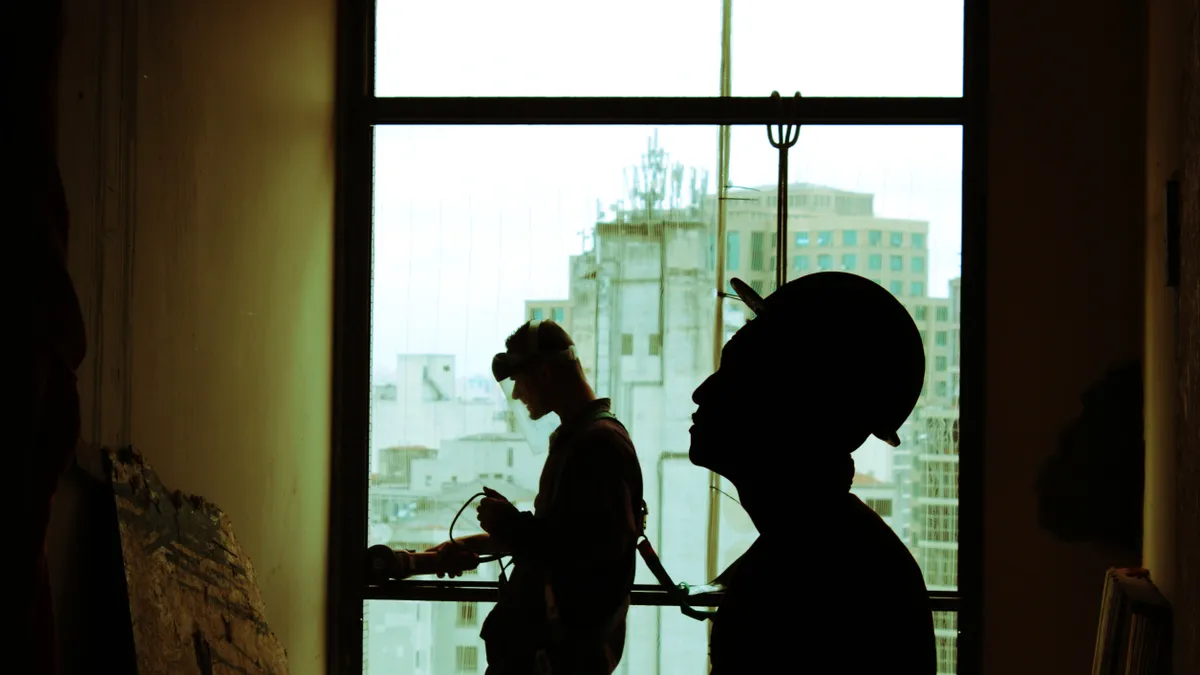Dive Brief:
- The Centers for Disease Control and Prevention has updated its checklist for construction employers during the COVID-19 pandemic, and has asked contractors to consider the mental health and wellbeing of their workers.
- The CDC’s checklist encourages employers to talk openly with employees about how the pandemic is affecting work; communicate clear expectations; anticipate behavior changes in employees, such as irritation, anger, increased sadness or difficulty concentrating; and ensure that there is a system in place to identify and provide mental health services to employees in need of support.
- The CDC noted that the pandemic has negatively affected employee mental health for several reasons, including having concerns about the risk of being exposed to the virus, conflict at home, lack of relaxation time, uncertainty about the future and adapting to a changing work schedule.
Dive Insight:
A recent article in the Scandanavian Journal of Public Health called COVID-19 and mental health in construction a “perfect storm.” The article’s conclusion urges governments, the industry and individual workplaces to act quickly to mitigate suicide risks. “Anticipating, preparing and acting to ameliorate this risk, particularly among low skilled construction workers, will save many livelihoods, as well as lives,” the report said.
Greg Sizemore, vice president of health, safety, environment and workforce development at Associated Builders and Contractors, is also the chair of the Construction Industry Alliance for Suicide Prevention. He said that construction safety is frequently a top concern for contractors, and mental health should continue to play a large part in that.
“It is our responsibility to ensure not just a safe worksite but a healthy worksite,” Sizemore told Construction Dive. “And I say that in light of COVID-19 and the impact 2020 has had and will continue to have.”
The construction industry can have a macho stigma, Sizemore said, that promotes hyper masculinity and hiding vulnerabilities. That doesn’t have to be the case, he said. Additionally, a large population of construction workers are older, as the industry has struggled to recruit young people to the workforce.
Workers in physical pain from past injuries or workers who find themselves needing to keep up will turn to substances, illegal or legal, which are frequently tied to mental health issues and suicide, Sizemore said. In addition, for some workers, the pandemic has exacerbated family issues or the mental health of a loved one. It’s important to look at the whole picture, Sizemore said.
On the industrywide level, Sizemore said he believes construction is up to the challenge — citing its response to the pandemic once work was deemed essential.
For contractors, Sizemore suggested visiting the CIASP website preventconstructionsuicide.com to download the needs assessment to determine how to promote a healthy jobsite. For workers, Sizemore said, it’s about reaching out for help.
“Any individual remotely considering death by suicide, I plead with them to reach out for help. I plead with them to ask for someone for help,” he said.














